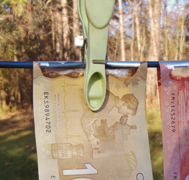Spring Financial Planning – Getting Your Books in Order in 1-2-3
 Spring cleaning doesn’t have to be only for your house. Nature’s rebirth can be a fresh start for many things — including your financial planning.
Spring cleaning doesn’t have to be only for your house. Nature’s rebirth can be a fresh start for many things — including your financial planning.
Messy finances can affect your life in many ways. Stress, uncertainty, and anxiety around money have all been shown to have a direct connection to mental and physical health. It’s in your best interest to take the time to get your financial planning in order now.
To get started on sprucing up your personal accounting, follow these steps:
Step 1: Make a Budget
Most people don’t know how they spend their money. Creating a personal budget is one of the best things you can do for your financial planning. It can help you see where you currently sit and forecast future expenses. When you have a budget, you can make room to set aside savings and better plan for emergencies. You’ll be able to see exactly where you can cut back or make a purchase if you so desire. A budget can give you peace of mind and help set you up for future financial success. In addition to a budget, tracking your expenses for a few months can really give you an idea of where your money is going and help you better manage your finances.
Step 2: Look for Ways to Save
Once you know how much you spend each month and have created a budget, you can see opportunities to save money. For example, a coffee-a-day habit may not seem like a big expense, but over the course of a year could end up costing $500. If you can afford that, great. But if that $500 is needed elsewhere, you might be better off taking a homemade brew in a travel mug. Or perhaps you’re eating lunch out every day and spending $15 on a meal. Over the course of the year, that could add up to nearly $4,000.
In addition, if you don’t have one already, you may want to set up a specific savings account where you put money that you don’t intend on using for everyday expenses and set aside money for retirement in a RRSP.
Step 3: Lock In Your Mortgage
If you own a home with a variable-rate mortgage, locking in to a fixed-rate mortgage could save you stress and money. With Canadian interest rates increasing, variable-rate mortgages are also going up. A fixed-rate mortgage means you make standard, monthly payments so you’ll always know what you have to pay and won’t be subject to increasing mortgage interest rates.
Step 4: Deal with Debt
We can’t talk about financial planning without talking about debt. Even if you have the best budget and have found ways to save in your everyday spending, if you’re putting a large portion of your paycheque towards high-interest, unsecured debt, such as credit card payments, student loans, and lines of credit, it’s going to be that much harder to save. Making a plan to pay down debt and get as much of it as possible out of your budget will help your personal accounting grow by leaps and bounds.
Financial planning doesn’t have to be done alone. At DebtCare Canada, we can help you make a budget, find savings, understand your mortgage options, and deal with debt.
Contact DebtCare today for a free consultation: 1-888-890-0888.


